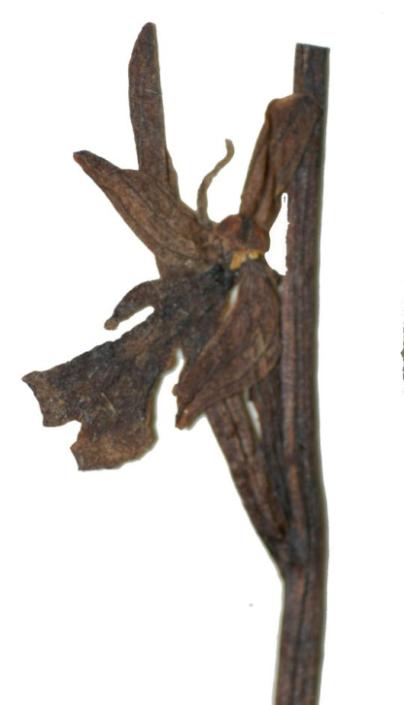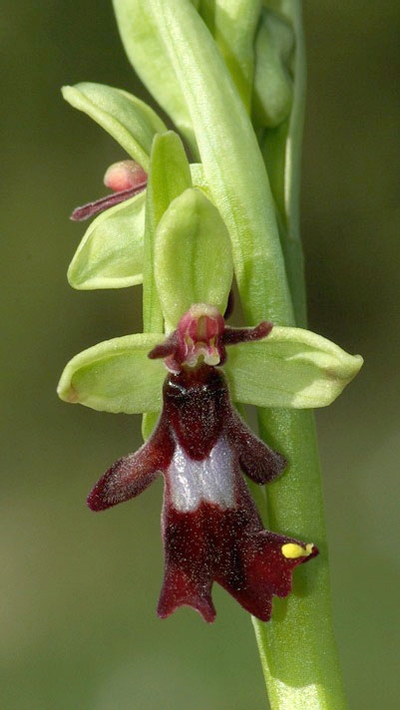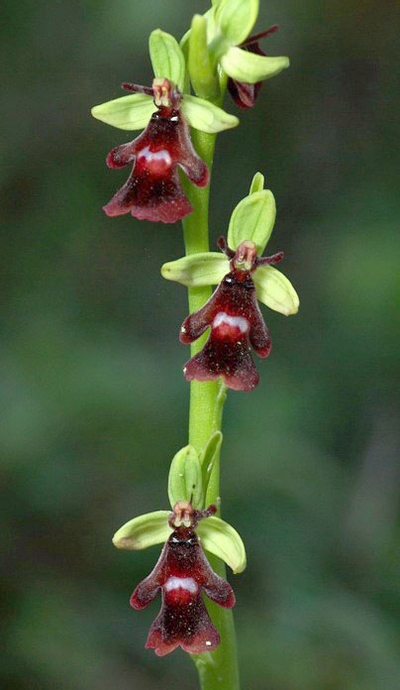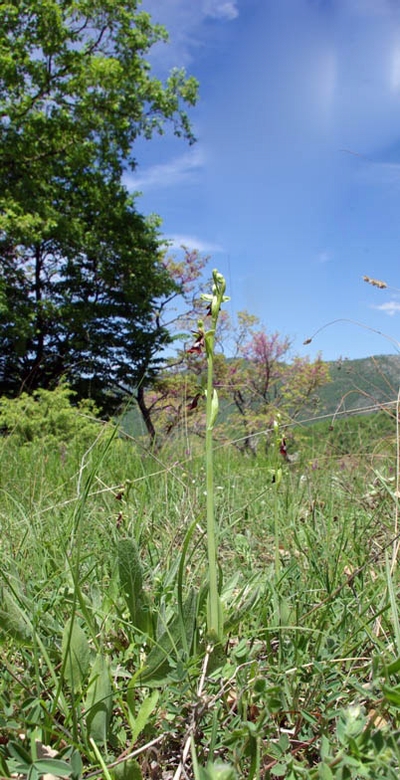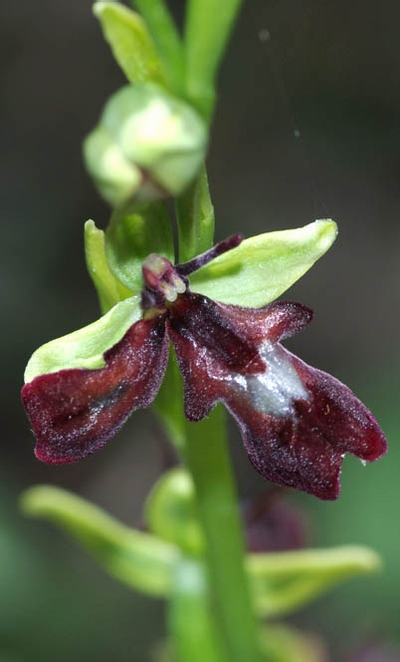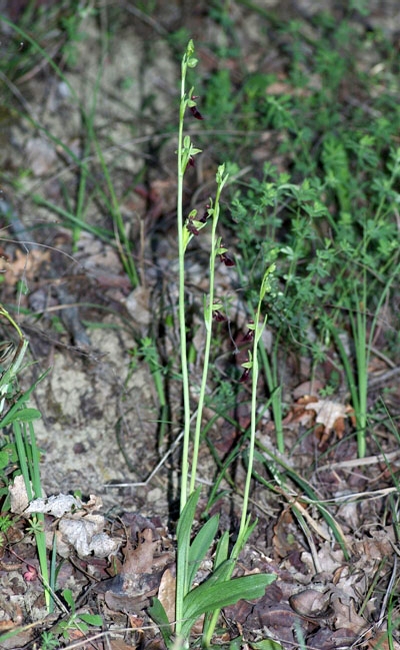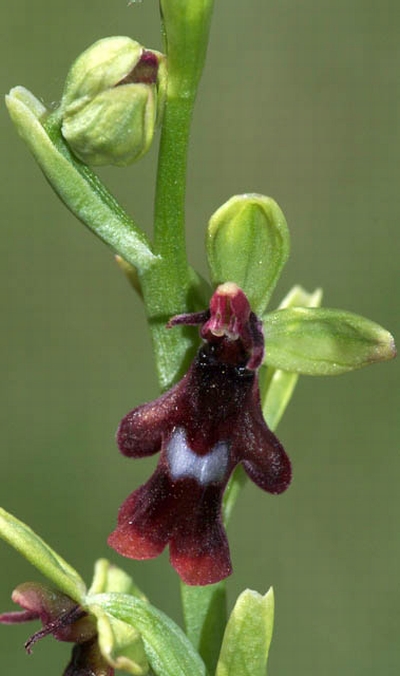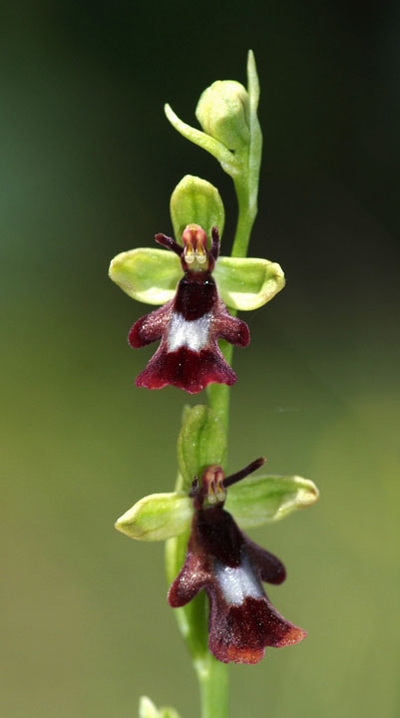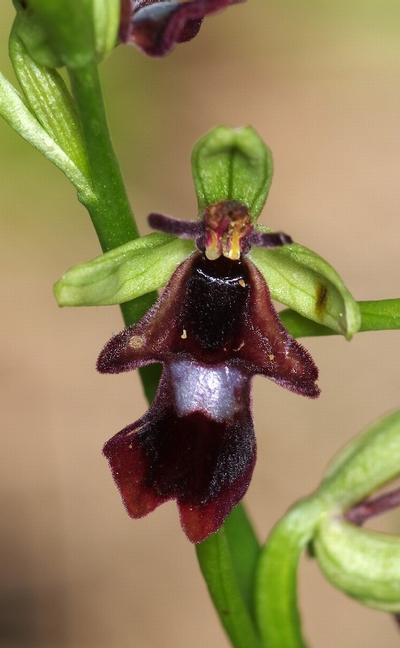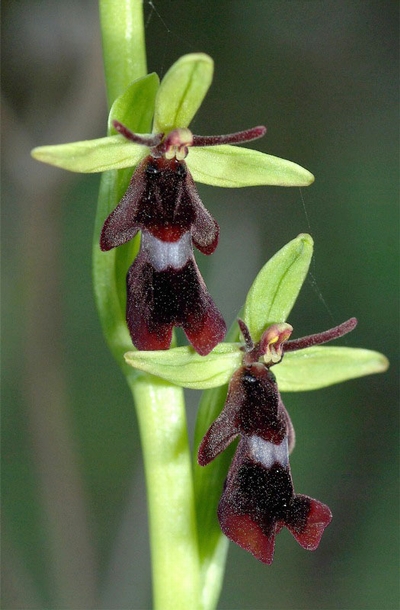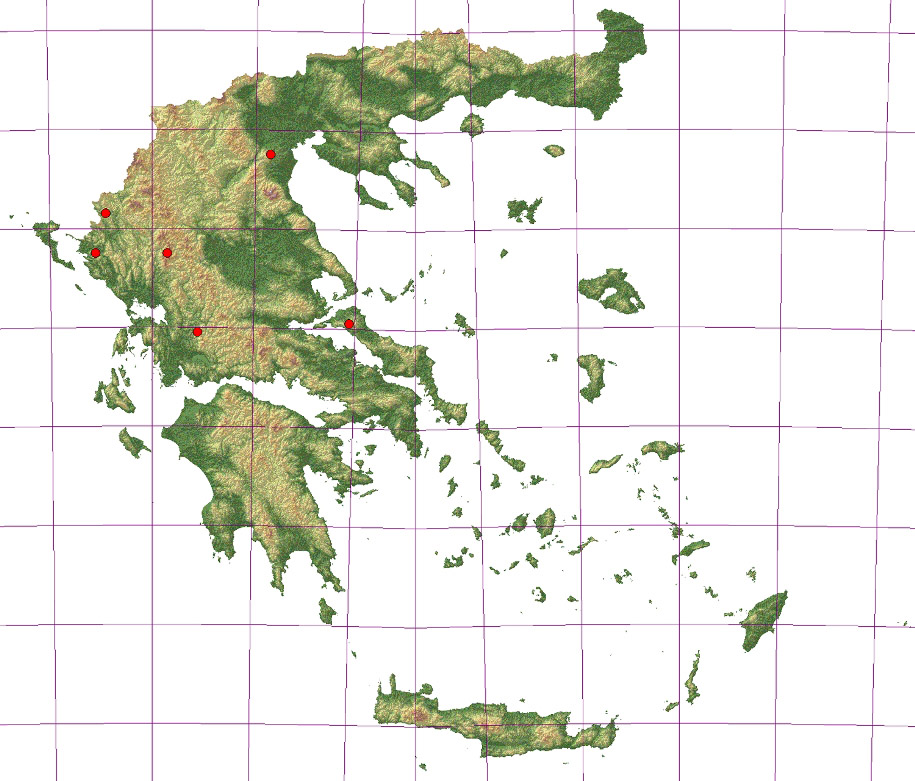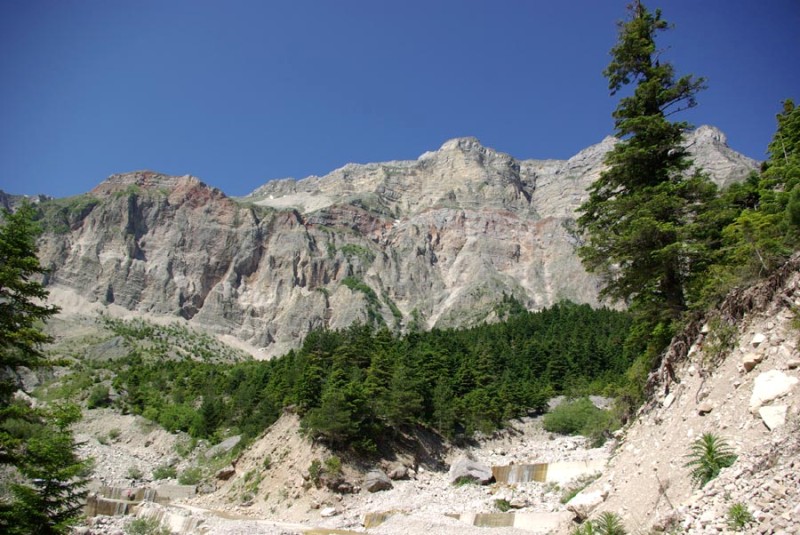Ophrys insectiferaLINNAEUS, 1753 |
|||||||||
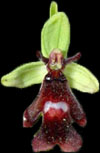 |
|||||||||
|
Περιγραφή: Λεπτό και ψηλό φυτό. Τα άνθη μικρά και μαυριδερά τόσο που δυσκολεύουν τον εντοπισμό του φυτού. Μακριά ταξιανθία με 2 ως 15 άνθη που είναι τρίλοβα, με μήκος γύρω στο 1 εκατοστό. Σέπαλα πάντα πράσινα. Θυρεός κεντρικός με μορφή οριζόντιας, παχιάς ταινίας που είναι από άσπρη-γκρι ως γαλάζια-γυαλιστερή. Ιδιαίτερα αμβλύ γυνοστήμιο και πέταλα μαύρα και μακριά, λεπτά που μοιάζουν με κεραίες σφήκας. Η κατασκευή του άνθους απόλυτα προσαρμοσμένη να μοιάζει σε σφήκες του γένους Argogorytes (A. mystaceus, A. fargeii) και σπανιότερα του γένους Sterictiphora (S. furcata). Αποτελεί και την μία απο τις δύο περιπτώσεις Ophrys στην Ευρώπη που προσελκύουν τέτοιους επικονιαστές (η άλλη είναι η Ophrys regis-ferdinandii).
Βιότοπος - Κατανομή: Ασβεστολιθικά, συνήθως υγρά εδάφη, σε άκρες δασών, κυρίως κωνοφόρων, μερικές φορές σε υγρά ως και ελώδη λιβάδια. Στην Ελλάδα οι δύο μοναδικές τοποθεσίες που έχει εντοπιστεί τα τελευταία χρόνια είναι ξέφωτα ή σκιερά μέρη σε δάση βελανιδιάς και κωνοφόρων. Η κατανομή της είναι κυρίως μεσο-ευρωπαϊκή. Είναι η βορειότερη σε κατανομή Ophrys φτάνοντας στις Σκανδιναβικές χώρες. Η μόνη επιβεβαιωμένη θέση με Ophrys insectifera στην ελληνική επικράτεια, τα τελευταία 30 χρόνια, ήταν κοντά στο Δελβινάκι, στα ελληνοαλβανικά σύνορα. Στο σημείο και 2-3 χιλιόμετρα πέριξ αυτού υπάρχει υγιής πληθυσμός με περισσότερα από 100 άτομα. Υπήρχε επίσης σίγουρη αναφορά από το 1980 για την βόρεια Ευβοια, ο βιότοπος όμως πριν πολλά χρόνια καταστράφηκε για καλλιέργειες. Οι Willing & Willing την εντόπισαν στις 7-5-1982 στα Ακαρνανικά όρη νότια του οικισμού Καραμαναίικα. Οι Holzinger & Kunkele σε εργασία του 1985 αναφέρονται σε καταγραφή κοντά στο Βέρμιο αλλά χωρίς φωτογραφική τεκμηρίωση. Τέλος, υπάρχει το δείγμα του Ζαγανιάρη στο ερμπάριο του βιολογικού τμήματος του ΑΠΘ, από την περιοχή της Αμφίπολης Σερρών, παλιά κατάθεση με όνομα Ophrys myodes, που αντιστοιχεί όντως σε Ophrys insectifera (φωτογραφία παρακάτω). Στις 3 Ιουνίου 2012, μετά από σχεδόν 30 χρόνια, ανακαλύφθηκε και δεύτερη τοποθεσία στην Ήπειρο, στις ανατολικές πλαγιές των Τζουμέρκων σε υψόμετρο 1100 μέτρων, σε μικτό δάσος υβριδογενούς ελάτης και μαυρόπευκου (εύρεση από Κατερίνα Γούλα).
Εποχή άνθησης: Όψιμη άνθηση, κατά τον Μάιο ως αρχές Ιουνίου. Στην Ελλάδα μερικές χρονιές από τα μέσα Απριλίου.
Slender and tall plant. The flowers (No: 2-15) are small, black and arranged in a long inflorescence. They are trilobed, longer than wider about 1 cm in length. Sepals always green. Speculum white – grey to bluish – shiny, forming a wide stripe in the middle of the median lobe. Gynostemium blunt and short, petals black and long reminding insect’s antennas. The whole flower construction is perfectly adapted to resemble wasps of the genera Argogorytes (A. mystaceus, A. fargeii) and rarely Sterictiphora (S. furcata). It is the one of the two cases of Ophrys in Europe that attract not bees but wasp pollinators (the other case is Ophrys regis-ferdinandii).
Calcareous, usually wet soils in forest edges, mostly conifers, sometimes wet and marshy meadows. In Greece the only two sites that have been found during the recent years are clearings or shady places in oak and pine forests. Its distribution is mainly medium-European. It is the northernmostly distributed Ophrys, reaching the Nordic countries. The only confirmed location with Ophrys insectifera in Greek territory, the last 30 years, was near Delvinaki, close to Greek-Albanian border. In that location and 2-3 km around it, there is a healthy population of more than 100 individuals. There is also a confirmed report from north Evia which goes back to 1980, but this particular habitat was destroyed long ago for cultivation purposes. Willing & Willing located Ophrys insectifera in 07/05/1982, at Arcanian mountains south of the village Karamanaiika. Holzinger & Kunkele in 1985 reported a finding near Vermio Mt but without photographic documentation. Finally, there is a sample from prof. Zaganiaris, deposited in the Herbarium of the Biology department of the Aristotle University of Thessaloniki. He sampled it close to Amphipolis, Serres and named it as Ophrys myodes. The sample was confirmed indeed as Ophrys insectifera (photo below). On June 3, 2012, after almost 30 years a second location was discovered at Epirus, on the eastern slopes of Tzoumerka, at 1100 meters, in mixed forest of Abies borisii-regis and Pinus nigra. This place now consists the second, recent, confirmed observation of this species in Greece (Katerina Goula).
Flowering time: Late flowering during May and early June. In Greece, sometimes starting from mid-April.
|
|
||||||||
|
|
|||||||||
|
|
|||||||||
|
|
|||||||||
|
|
|||||||||
|
|
|||||||||
